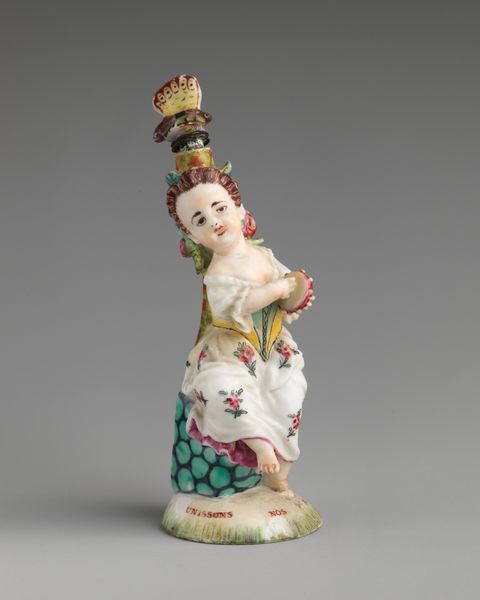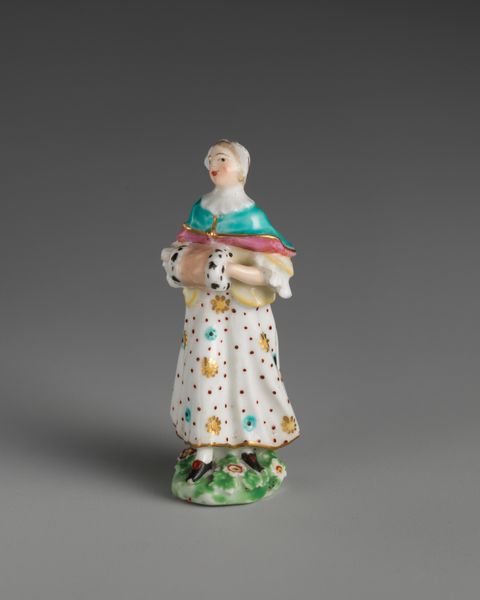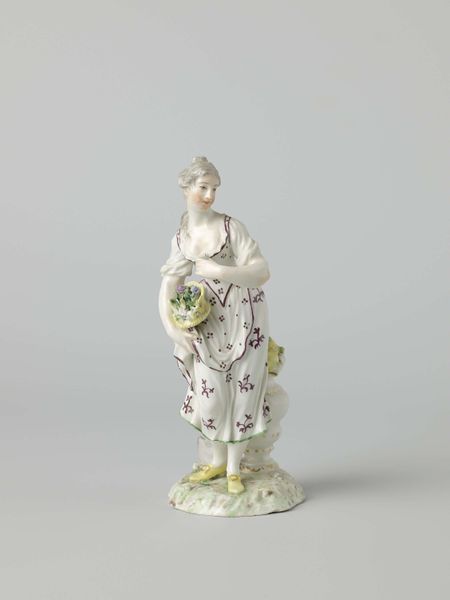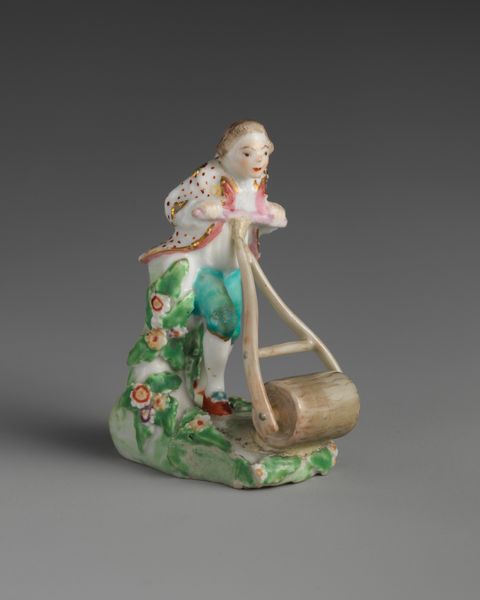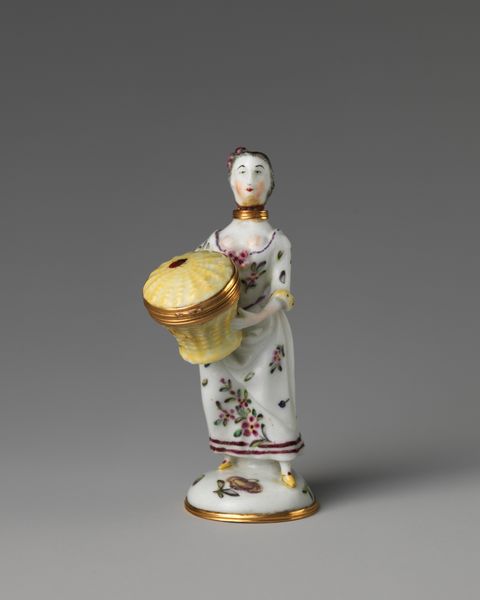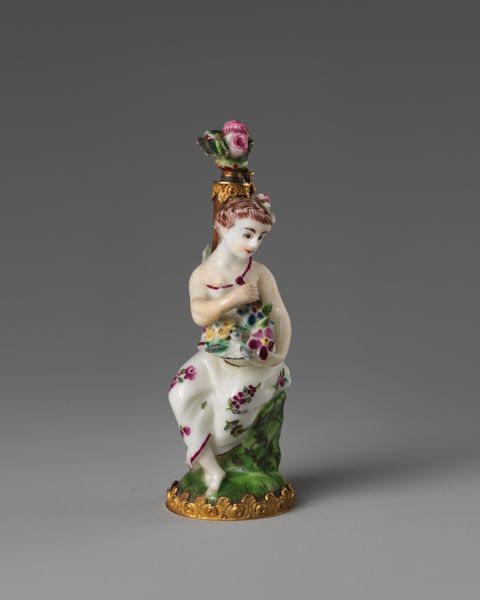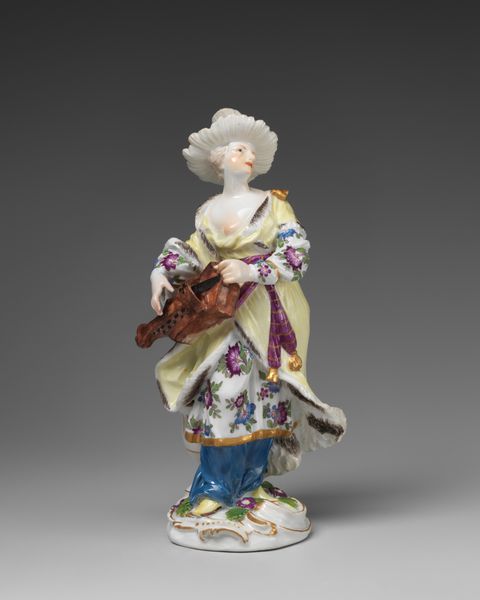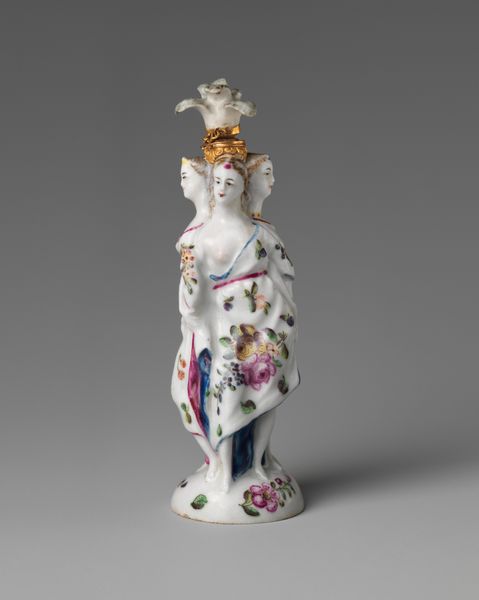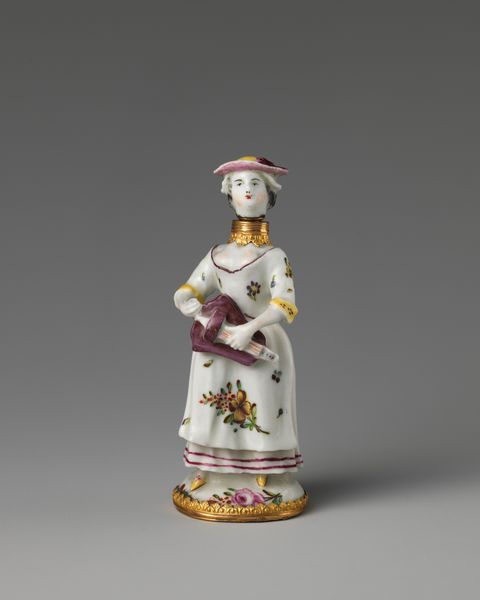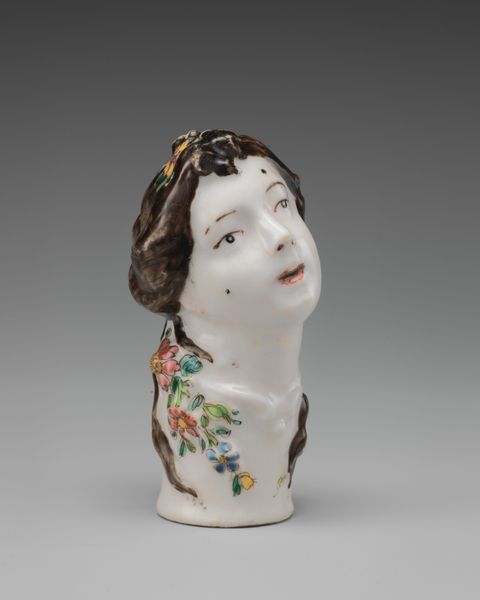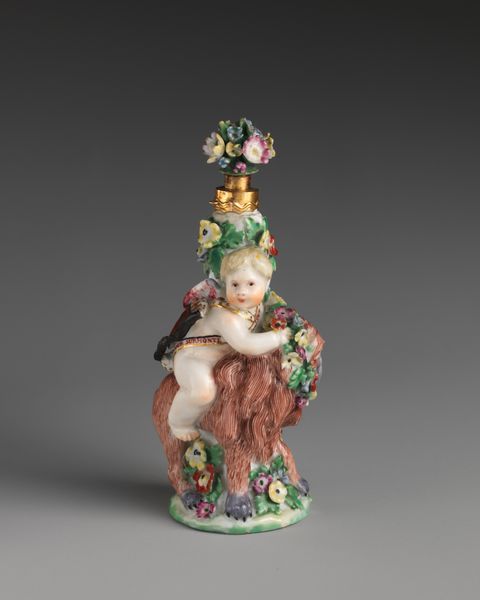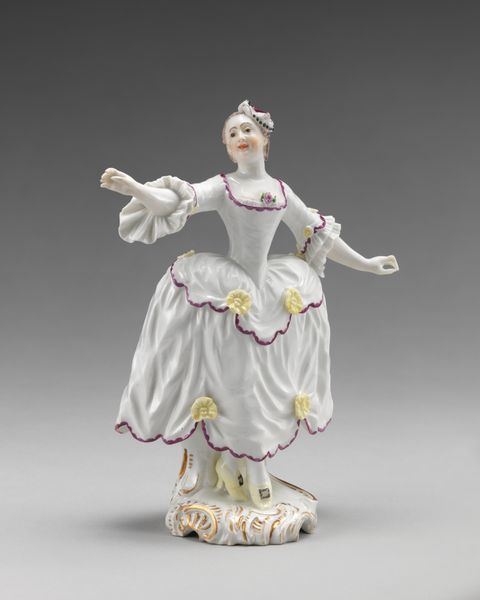
ceramic, porcelain, sculpture
#
portrait
#
ceramic
#
porcelain
#
figuration
#
sculpture
#
decorative-art
#
rococo
Dimensions: 4 1/2 × 5 1/4 in. (11.4 × 13.3 cm)
Copyright: Public Domain
Curator: Here we have a charming porcelain figure, "Vintner," crafted sometime between 1740 and 1750 by the Chelsea Porcelain Manufactory. It's currently housed at the Metropolitan Museum of Art. Editor: It’s…quaint. The pastel palette, the languid pose, everything about this piece exudes a very particular form of aristocratic leisure. Curator: Note the delicate craftsmanship—the Rococo sensibility evident in the floral motifs painted on her dress and the carefully modeled grapes in her hand. Consider how the artist captures light through the glaze. Editor: Right, but that "delicacy" obscures a complex social hierarchy. Who exactly is she? Certainly not someone who labored in a vineyard. This is a romanticized, idealized image of labor created for an elite audience who probably never encountered the realities of working-class life. Her tilted posture makes her look almost… theatrical, devoid of genuine human weight. Curator: Perhaps, but consider the technical mastery involved in producing porcelain of this quality during this era. The composition relies on the careful juxtaposition of form and surface treatment, achieving visual harmony through the skillful arrangement of lines, shapes, and colors. Editor: And at what cost? This “harmony” is constructed on the backs of exploited workers, perhaps even enslaved people, whose labor funded such frivolous displays of wealth. This piece feels like an echo of systemic inequalities and colonial endeavors. It also makes me wonder about the labor that made the clothing she's imitating as a pastoral figure in decorative art form, which were also inaccessible for women from the working class. Curator: We cannot deny that her imagery represents a particular moment, with specific values, but it remains valuable in illustrating 18th century notions about design. Editor: Acknowledging its function within that historical moment seems insufficient when considering the ethics of its creation. Even aesthetics exist within ideological frameworks, and the "Vintner" reveals far more about those frameworks than about actual labor. Curator: An interesting observation. Editor: An uncomfortable one, perhaps. But crucial for moving toward an ethical engagement with art history.
Comments
No comments
Be the first to comment and join the conversation on the ultimate creative platform.
